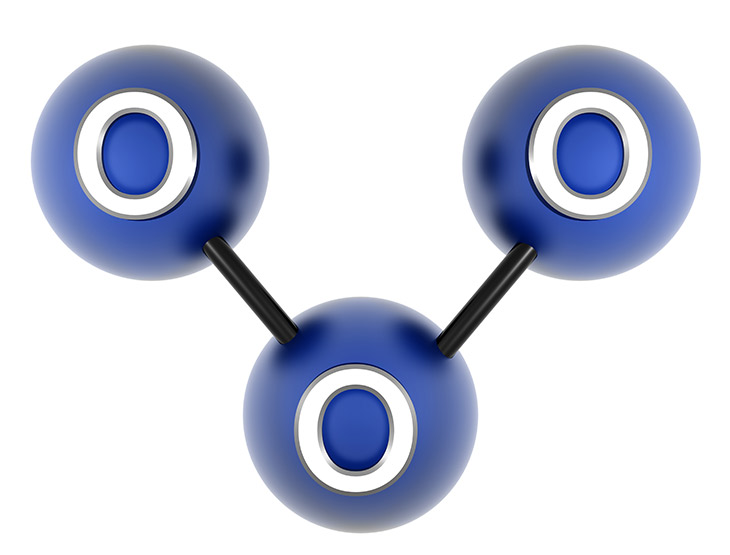
Ozone Oxidation is Nature’s Sanitizing Powerhouse
Ozone (O3) is a form of oxygen that has one more oxygen atom than the atmospheric oxygen (O3) we breathe. It’s this third, loosely-bonded oxygen atom that effectively destroys contaminants, which is the key to ozone’s robust oxidizing power. Since ozone is unstable, it has a fairly short half-life so it has to be produced and supplied continuously to be properly sanitized and disinfected. Since our humble beginnings in 1975, we have successfully determined the appropriate quantity of supplied ozone to provide the needed disinfection power for a given application.
How is Ozone Generated?
The chemical reaction that results in ozone is pretty simple. Ozone is a form of oxygen that is created when electrical energy breaks apart an ordinary oxygen molecule (O2), which starts a chemical reaction that results in ozone (O3). DEL systems duplicate this process with advanced technology that produces ozone safely, reliably, and effectively to achieve expected sanitization and disinfection results.
How Does Ozone Work?
Once a DEL system has delivered ozone, it cleans the target water or produces ozone-enriched water to sanitize a surface through ozone oxidation. The unstable third oxygen combines with organic and inorganic molecules to destroy them through oxidation. This process happens instantaneously. For example, when ozone is introduced into a swimming pool, it will instantly kill the organic parasite Cryptosporidium parvum as well as other chlorine resistant microorganisms on contact. It will also destroy inorganic materials such as metals, oils, suntan lotion, and cosmetics to name a few.
